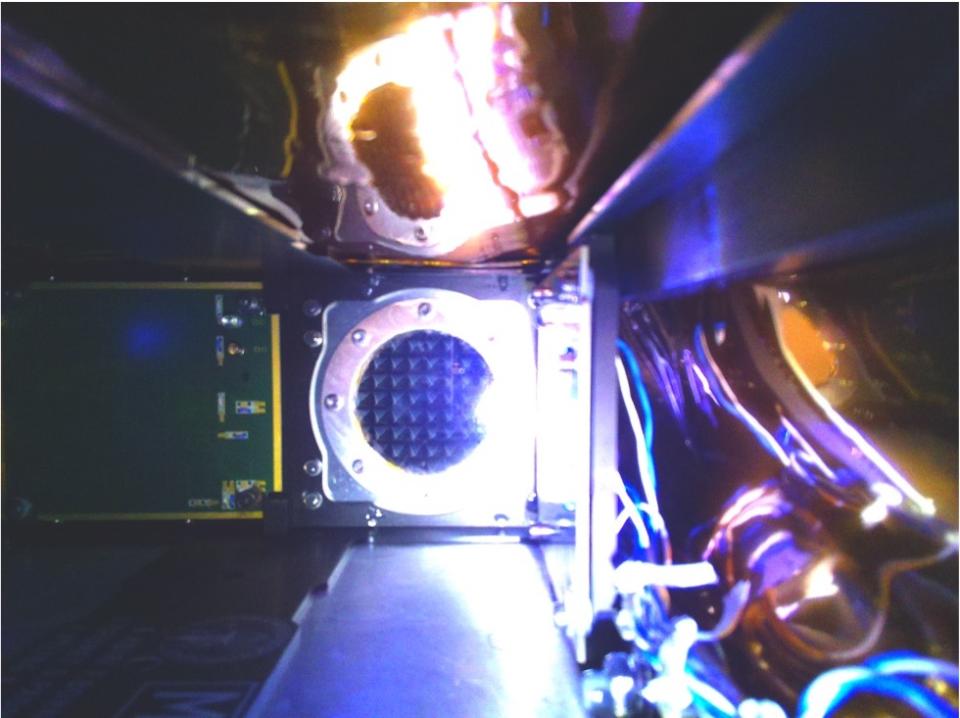Generating solar power in space just took a major leap forward

It might sound more fiction than science, but what if you could generate solar power 24/7 by launching solar panels into space and beaming the energy back to Earth? Well, the idea just got one step closer to reality.
Scientists at the California Institute of Technology have successfully launched the Space Solar Power Demonstrator (SSPD) into orbit as part of the Caltech Space Solar Power Project (SSPP), which aims to test how the device could generate solar power while in orbit and wirelessly transmit the energy back to Earth.
The SSPD, which weighs just 50 kilograms, was fixed onto a Momentus Vigoride spacecraft that was then transported to space by a SpaceX rocket on January 3. After reaching the optimal altitude within ten minutes of launch, the Momentus spacecraft was then deployed.

Scientists posing with the Momentus Vigoride spacecraft. (California Institute of Technology)
When sunlight strikes the photovoltaic (PV) cells on the SSPD, the light is converted into microwaves that travel to antennas on Earth, which convert the microwaves into electricity. The research team states that microwave transmission is safe because it is a form of non-ionizing radiation, meaning that it cannot remove an electron from an atom or molecule and cannot damage DNA.
“Non-ionizing radiation at the [Earth’s] surface is significantly less harmful than standing in the sun,” Ali Hajimiri, Caltech professor and co-director of SSPP, said in an October press release.
One of the main research objectives of the SSPD is to study how a structure measuring approximately two metres in length and width could eventually be scaled into a kilometre-scale constellation that would form the main power system.
See also: Alberta renewable energy surge could power 4,500 jobs
Two other main objectives include analyzing the performance of the microwave power transmitters and testing how 32 different types of PV cells perform in harsh space conditions over a six-month period.
Some of the key challenges the team is evaluating are the cost of launching solar panels that are bulky and relatively heavy, as well as the need for extensive wiring to transmit energy back to Earth. To work around these hurdles, ultrathin composite materials were designed from scratch to keep the SSPD light, cost-effective, and resilient enough to withstand space travel.

An interior photo captured by a camera on the Space Solar Power Demonstrator. (California Institute of Technology)
Cameras attached to the SSPD are being monitored by the researchers who aim to complete a full assessment within several months.
"No matter what happens, this prototype is a major step forward," Hajimiri said in a recent press release.
"It works here on Earth and has passed the rigorous steps required of anything launched into space. There are still many risks, but having gone through the whole process has taught us valuable lessons. We believe the space experiments will provide us with plenty of additional useful information that will guide the project as we continue to move forward," Hajimiri said.
The research team believes that some of the main benefits of this technology are accessing the unlimited supply of solar power at a higher intensity and without interruptions, such as changing seasons or clouds.
Watch below: Solar guru's TikTok making the tech more approachable
The team aims to eventually launch a constellation of modular spacecraft that will produce energy for many areas around the world, especially in places that do not have access to reliable sources of electricity.
Despite this sector's infancy, there are already several players that are researching and developing space-based solar power (SBSP) technologies. The federal governments in China, the United Kingdom, and the United States are in various stages of studying and developing SBSP projects. Private companies, such as Airbus, are also experimenting with beaming energy over small distances in hopes of one day scaling their projects.
Thumbnail image: A rendering of the Space Solar Power Demonstrator. (California Institute of Technology)


